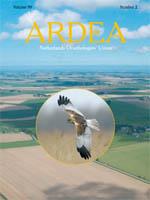The diet of Great Cormorants Phalacrocorax carbo sinensis at Lake Dümmer, a shallow eutrophic lake of 1240 ha in Lower Saxony (Germany) was analysed by collecting 562 regurgitated pellets over a period of one year. Pellets contained structures of 10,645 fishes belonging to 15 species. Substantial differences were found in frequency, composition and size of prey fish species. Pikeperch, Ruffe, Roach and Perch accounted for the largest seasonal differences in the diet. During late autumn and winter the diet was dominated by small-sized cyprinids and Ruffe. In spring Great Cormorants primarily foraged on larger-sized cyprinids. Young-of-the-year percids, dominated by Pikeperch, were the primary prey during summer. We estimated that at least 32.6 tons (26.3 kg/ha) of total fish biomass was removed by Cormorants, of which one third (10.8 tons) consisted of Pikeperch. 81% of the Pikeperch biomass was removed in August—September, indicating that the Great Cormorant is an important predator of juvenile Pikeperch at Lake Dümmer. Our findings highlight the need of extensive diet analyses in all seasons to obtain a comprehensive picture of the impact of Cormorant predation on fish stocks. Snapshots of the diet sampled over short-time periods may be misleading and inadequate for local management.
How to translate text using browser tools
1 October 2011
Seasonal Shifts in Diet Composition of Great Cormorants Phalacrocorax carbo sinensis foraging at a Shallow Eutrophic Inland Lake
Matthias Emmrich,
Heinz Düttmann

Ardea
Vol. 99 • No. 2
October 2011
Vol. 99 • No. 2
October 2011
biomass removal
Cormorant predation
pellet analysis
Pikeperch
prey shifting
YOY fish




